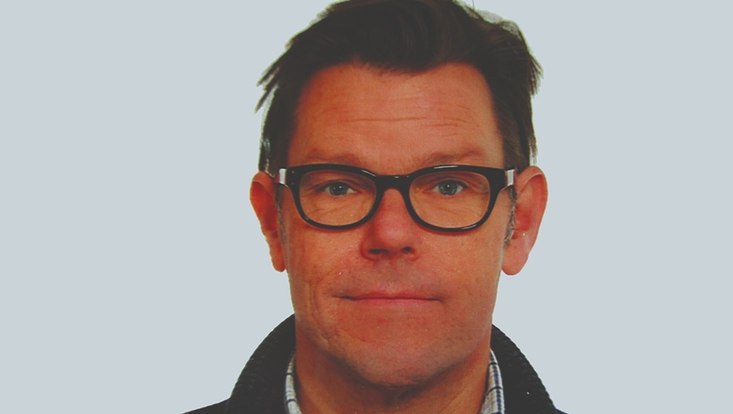Ir. Ton Matton

Curriculum
After completing his urban planning studies at TU Delft in 1991, he initially founded the office Schie 2.0 in Rotterdam; urban and environmental design, in search of implementations of self-sufficient architectural moments. Ton Matton was part of the Dutch design movement of the 1990s, which worked on the "Amnesty for the Built Reality" and actively experimented with the issues of planning and spatial planning. The projects in which Matton drastically altered perception through a different representation of a situation are the most striking, to the extent that one had to speak of a design in fact.
A former GDR prefab school serves as the base of MattonOffice indie urbanist. Between Hamburg and Berlin, Ton Matton maintains a large studio in a small village structure. With a hypermodern life between urban attitude and wood-fired heating, Ton Matton seeks connections between traditional rural life and contemporary lifestyle. "The fact, that I live in Wendorf doesn't mean that I can't be reached. I live in Central Europe. I have satellite Internet, a Lada Niva four-wheel drive, and a mobile phone, like everyone else in the Global Village." (A10 Magazine, Wonderland 2006). Here, Ton Matton attempts to pursue the small utopias and disruptive moments of everyday life. MattonOffice understands nature as an object for the aesthetic mediation of societal crises.
Ton Matton's work ranges between object design, social design, ecological urban planning, and artistic activism. Currently, he is researching the possibilities for a 'slow development plan' and a Broad Welfare Architecture, preparing the Potemkin Art Academy in Schwerin, and developing 'the Parliament of the Commons', a democratic debate installation.
Publications (selection)
- Slow Urban Planning. Tribsees Zukunft machen, Berlin 2023.
- @the countryside Wendorf Academy Summerschool 22, Wendorf 2022.
- Zweifel. Performative Stadtplanung in 13 Vorträgen, Berlin 2019.
- Dorf machen. Improvisationen zur sozialen Wiederbelebung (ed.), Berlin 2017.
- ed. together with Michael Obrist and Antoine Turillon: Not Welcome. Ausstellung, Linz 2016.
- Hacking Habitat (ed.) , München 2015.
- ed. together with Christopher Dell: Improvisations on Urbanity. Trendy Pragmatism in a Climate of Change, Rotterdam 2010.
Research project: Dance of the Turbines: Observing Wind Turbines and Designing Wind Farm Landscapes
As a fellow at the CAS "Imaginaria of Force", I intend to focus my research on the topic "Dance of the Turbines: Observing Wind Turbines and Designing Wind Farm Landscapes".
I have already extensively engaged with wind turbines and wind farms in the Netherlands. My conclusion at that time was that not only the mere installation but also the number of turbines is significant in order to truly speak of a wind farm. By now, some areas in northern Germany almost resemble this vision.
The concept is to erect a wind turbine observation machine on the Altonaer Balkon. From there, one has a view of 9+1 wind turbines from Hamburg Energie. These turbines should, if technically possible, rotate in a specific choreography to convey the imaginaria of force. During the event, an understanding of turbine observation will be developed, the language of the turbines conveyed, and choreographically exciting moments will arise. As a fellow, I will deliver a lecture on turbine observation, which will include:
- Turbine binoculars or pre-made turbine windows for viewing,
- the turbine alphabet,
- a turbine roulette, and
- Turbine cookies (traditional Dutch speculaas with windmill motifs).
Research results: WindFarmLiving. Research on the Role of Wind Turbines in Contemporary Landscapes
In the summer of 2024, I served as Artist in Residence at the CAS "Imaginaria of Force" at the University of Hamburg. During this residency, I built on my earlier work, including the film "Dance of the Turbines", to propose a new hypothesis: increasingly taller wind turbines—often over 200 meters—create a narrative that transcends the landscape itself. This calls for rethinking their design and integration into the environment
Historical Context and Challenges
Since the 1980s, wind turbines have evolved from 30-meter structures to heights nearing 200 meters. While early turbines sparked debates about “horizon pollution,” modern turbines dominate the landscape, especially in northern Europe’s flat regions. Balancing energy efficiency with environmental sensitivity remains critical.
Redefining Landscape Design
Wind turbines now define the landscapes they occupy. In Flevoland, for example, turbines along roads and dikes create dynamic, functional environments, evolving into what can be called “turbine landscapes.” However, the scale of modern turbines renders traditional integration irrelevant, shifting the focus to designing new “energy landscapes” that reflect their autonomous presence
Research Observations and Opportunities
Two key questions drove my research: How can megaturbines fit meaningfully into landscapes? What narratives do they convey? Observations suggest turbines create a “floating infrastructure,” detaching from human scale. This concept inspired an animation depicting utopian hanging farms integrated into turbines. Paintings framed in gold explored the “language of turbines,” interpreting the movement of blades as communicative elements, even inspiring an alphabet.
Conclusion
By viewing turbines as autonomous layers, we open possibilities for experimental designs integrating housing or agriculture, merging sustainability with innovative living concepts. This work highlights the need for interdisciplinary collaboration to create landscapes that harmonize functionality with social and ecological meaning.
